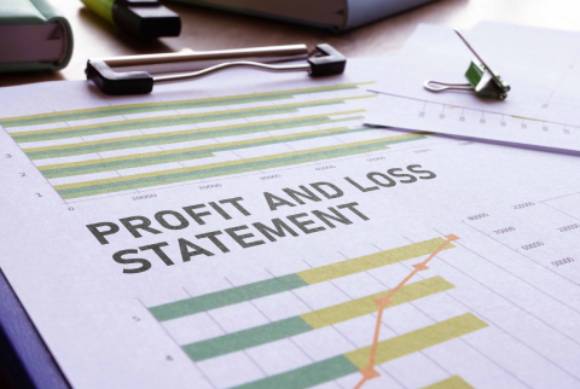
Trusts vs. Wills: Key Differences and Which One You Need
May 2, 2025
Understanding Estimated Taxes
June 1, 2025
📊 The Financial Metrics Every Small Business Should Track
(And Why They Matter)
Running a small business is like steering a ship. You can’t just guess your way to your destination—you need a compass, a map, and a firm grip on the wheel. In the world of entrepreneurship, financial metrics are that compass and map. They help you navigate your business journey with clarity, confidence, and precision.
Whether you’re a solo entrepreneur, managing a growing startup, or running a brick-and-mortar shop, understanding your key financial metrics is non-negotiable. These numbers tell you how healthy your business is, where you’re thriving, and where you need to adjust course.
Let’s explore the essential financial metrics every small business should track, why they’re critical, and how you can use them to build a thriving, sustainable business. 💼💡
📈 1. Revenue (aka Sales or Top Line)
What it is:
Revenue is the total amount of income generated by the sale of goods or services.
Why it matters:
Revenue is your business’s lifeblood. Tracking it over time helps you:
-
Identify growth patterns 📉📈
-
Measure the success of marketing or sales campaigns
-
Understand seasonality in your business
💡 Pro Tip: Compare monthly, quarterly, and annual revenues to track trends and set realistic growth targets.
💰 2. Net Profit (aka Bottom Line)
What it is:
Net profit is your revenue minus all expenses, including operating costs, taxes, interest, etc.
Why it matters:
Net profit shows whether your business is actually making money. You could have strong sales but still lose money if your costs are too high. This metric is essential for:
-
Assessing financial health
-
Attracting investors
-
Planning for expansion
🧮 Formula:
Net Profit = Total Revenue – Total Expenses
✅ A consistently positive net profit means your business is on solid ground.
📊 3. Gross Profit Margin
What it is:
This measures the percentage of revenue that exceeds your cost of goods sold (COGS).
Why it matters:
It shows how efficiently your business is producing or selling products. A low gross margin could mean your prices are too low, or your costs are too high.
🧮 Formula:
Gross Profit Margin = (Revenue – COGS) ÷ Revenue × 100%
💡 Aim for a strong margin so you have room to cover other expenses and still make a profit.
🧾 4. Operating Expenses
What it is:
These are the ongoing costs to run your business (rent, payroll, utilities, marketing, etc.).
Why it matters:
Operating expenses directly impact your profitability. If they’re too high, they can eat into your profits even if revenue is strong.
🔍 Track and analyze your expenses regularly to identify waste and improve efficiency.
💳 5. Cash Flow
What it is:
Cash flow measures how much money is moving in and out of your business.
Why it matters:
Positive cash flow means you have enough cash on hand to cover your bills, pay staff, and reinvest in your business. It’s especially critical for:
-
Seasonal businesses 🌦️
-
Businesses with long invoice cycles
-
Surviving slow periods
💥 Cash flow problems—not profitability—are the #1 reason businesses fail. Never overlook this metric!
📉 6. Accounts Receivable Turnover
What it is:
This measures how efficiently you’re collecting money owed to you by clients or customers.
Why it matters:
A low turnover rate means you’re waiting too long to collect payments—leading to cash shortages and potential losses.
🧮 Formula:
Accounts Receivable Turnover = Net Credit Sales ÷ Average Accounts Receivable
💡 Tighten up your payment terms and follow up consistently to improve this metric.
📦 7. Inventory Turnover
What it is:
This metric tells you how many times your inventory is sold and replaced in a given period.
Why it matters:
If you hold too much inventory, you tie up cash unnecessarily. If you hold too little, you risk running out of products.
🧮 Formula:
Inventory Turnover = COGS ÷ Average Inventory
⚠️ Use this metric to fine-tune ordering practices and optimize stock levels.
📅 8. Burn Rate
What it is:
Burn rate measures how quickly your business is spending its available cash.
Why it matters:
It’s especially critical for startups and growth-stage businesses that haven’t reached profitability yet. It tells you how long you can operate before needing more funding.
🔥 Know your burn rate to stay ahead of potential cash crises.
🏦 9. Current Ratio
What it is:
A liquidity ratio that compares your current assets to your current liabilities.
Why it matters:
This shows your ability to pay short-term obligations. A ratio above 1 means you can likely cover your debts.
🧮 Formula:
Current Ratio = Current Assets ÷ Current Liabilities
💡 It’s a great metric to show lenders or investors that your business is stable and solvent.
📊 10. Customer Acquisition Cost (CAC)
What it is:
This measures how much it costs to acquire a new customer.
Why it matters:
It helps you evaluate the efficiency of your marketing and sales efforts. If CAC is too high compared to the revenue each customer brings in, your growth isn’t sustainable.
🧮 Formula:
CAC = Total Marketing & Sales Costs ÷ Number of New Customers
🎯 Lower your CAC by optimizing campaigns and improving customer retention.
💵 11. Customer Lifetime Value (CLV)
What it is:
This is the total revenue you expect from a customer over the entire time they do business with you.
Why it matters:
Knowing your CLV helps you:
-
Decide how much to invest in customer acquisition
-
Improve loyalty strategies
-
Increase overall profitability
🧮 Formula:
CLV = Average Purchase Value × Purchase Frequency × Customer Lifespan
📈 Increasing CLV is one of the most powerful ways to grow your business sustainably.
📋 12. Break-Even Point
What it is:
The break-even point tells you when your business’s revenue covers all its fixed and variable costs.
Why it matters:
It’s the minimum you must earn to stay in business. Every dollar beyond this point is profit.
🧮 Formula:
Break-Even Point = Fixed Costs ÷ (Price – Variable Cost per Unit)
🔎 Use this to price your products and services strategically.
🎯 Why Tracking These Metrics Matters
Tracking these financial metrics isn’t just about being “good with numbers.” It’s about:
✅ Making better decisions
✅ Reducing financial risk
✅ Gaining investor confidence
✅ Managing growth effectively
✅ Staying ahead of problems
If you’re not tracking these metrics, you’re flying blind. And in business, flying blind is a fast way to crash.
👩💼 Leave the Numbers to the Pros: Choose FSMC Bookkeeping Service
📌 If all of this seems overwhelming, you’re not alone. Many small business owners are juggling so much that keeping track of their finances becomes a full-time job.
That’s where FSMC Bookkeeping Service comes in. 🧾✨
Why choose FSMC?
✅ Professional bookkeeping and accounting tailored to small businesses
✅ Real-time financial reporting to keep you on track
✅ Monthly reviews to help you understand your numbers
✅ Affordable and scalable service as your business grows
✅ Dedicated experts who care about your success
FSMC gives you peace of mind, letting you focus on what you do best—running and growing your business. 📈💼
💬 “I didn’t realize how much money I was leaving on the table until FSMC stepped in and cleaned up my books.” —Jamie
🚀 Final Thoughts
Financial metrics aren’t just for accountants and investors. They’re for you, the business owner who dreams big, works hard, and wants to build something that lasts.
Start tracking your metrics, make informed decisions, and don’t hesitate to bring in the experts when needed. With the right numbers and the right support—like FSMC Bookkeeping Service—you’ll have everything you need to thrive.
Request your FREE consultation and quote today.
📌 Don’t forget to share this with a fellow entrepreneur who needs to get their finances on track!
#SmallBusinessTips #FinancialSuccess #BusinessMetrics #BookkeepingMadeEasy #FSMCAccounting #CashFlowMatters #EntrepreneurLife #KnowYourNumbers #FSMCBookkeeping #SmartBusinessMoves 📊💼📈


